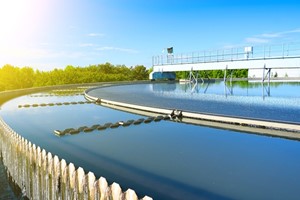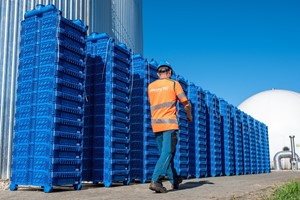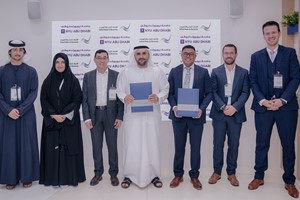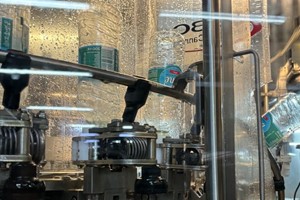EAST LANSING, Mich. — Tom Fernandez, a Michigan State University professor in the Department of Horticulture, has spent much of his 25-year career at MSU studying how to effectively manage water in greenhouses and nurseries to increase water-use efficiency and reduce nutrient runoff.
With funding support from Project GREEEN — Michigan’s plant agriculture initiative based at MSU and supported by the Michigan Plant Coalition, Michigan Department of Agriculture and Rural Development, MSU AgBioResearch and MSU Extension — Fernandez has developed management strategies to ensure agricultural inputs such as fertilizers and pesticides aren’t washed away from their intended targets, harming the surrounding environment and diminishing water quality.
According to the U.S. Environmental Protection Agency, about a half million tons of pesticides, 12 million tons of nitrogen and 4 million tons of phosphorous fertilizer are annually applied to crops. The runoff of these inputs contributes to some of the leading strains on water quality.
In greenhouses and nurseries, it’s easy to overwater many plants because the containers they’re in allow water to easily drain. Fernandez has found that by applying water based on a plant’s daily water use, irrigation can be reduced between 30%-80% depending on the species, and growers can conserve water and reduce the runoff of nutrients from the potting mix.
In addition to minimizing the runoff of nutrients from fertilizers, such as nitrates and phosphates, Fernandez has also examined how to lessen the movement of pesticides from the soil and nontarget areas. Pesticides are sprayed over the top of plants, so as a result, they hit unintended spaces such as the gaps between plants or the groundcover in greenhouses and nurseries. When irrigation is applied overhead, the pesticides in these spaces can move with the water and impact its quality.
Like how the movement of nutrients from fertilizer in the soil were reduced, Fernandez said applying less water to plants can help mitigate pesticides from moving in the soil and from nontarget surfaces. He also said that micro-irrigating individual pots using spray stakes, which fan water over single containers, proved to significantly reduce the surface runoff of pesticides.
“Time really is on our side when we’re thinking about both nutrients and pesticides,” Fernandez said. “The longer we keep them from getting into water systems, the more can happen to them biologically so they don’t cause a problem.”
With these strategies, Fernandez said there became a better understanding for how to irrigate container plants without promoting runoff. Since then, he’s taken on a new project: studying how to treat the water used in production by addressing the amount of nutrients and pesticides in it after application.
Beginning in 2018, Fernandez and Gemma Reguera, associate dean of faculty affairs and development in MSU’s College of Natural Science and professor in the Department of Microbiology, Genetics and Immunology, started to examine how nutrients from fertilizers interact with bioreactors, as well as to what extent bioreactors separate them from water used in greenhouses — an undertaking originally studied by Fernandez’s former doctoral student Damon Abdi, now an assistant professor of horticulture at Louisiana State University.
What do these bioreactors look like?
“They have a fancy name, but they’re really just big tubs of woodchips,” Fernandez said.
Fernandez said they originally developed a two-stage bioreactor system composed of woodchips, which convert nitrates into nitrogen gas, and heat-expanded clay, which gives the phosphorus from phosphates a large surface area to bind to when water runs through it.
Research showed that when water ran through the system, over 95% of nitrates could be taken out, and 80%-87% of phosphates could be broken down and removed. Fernandez and his team discovered that the activity occurred mostly in the woodchips, so the second stage of the bioreactor that implemented heat-expanded clay has since been discontinued.












